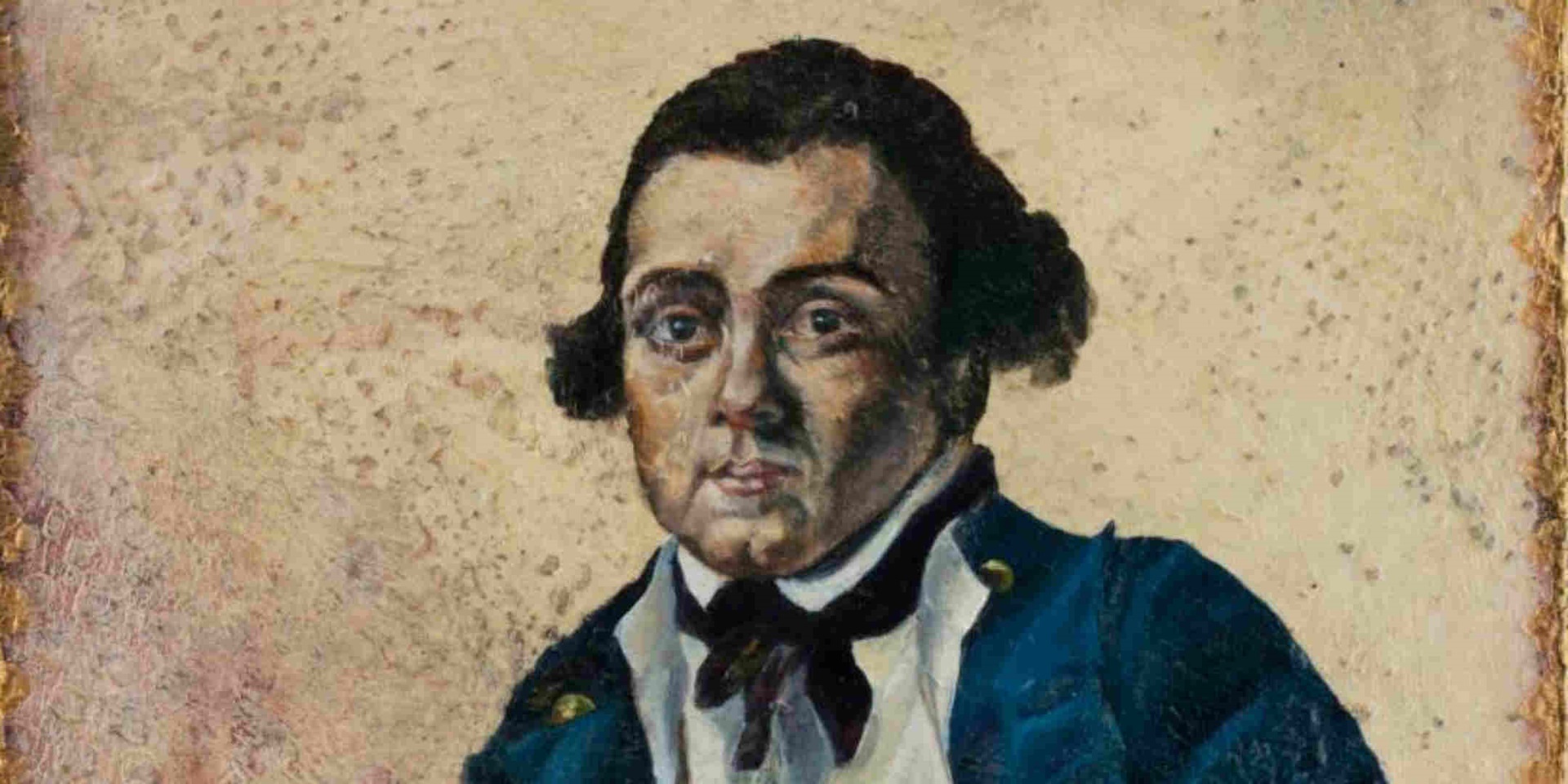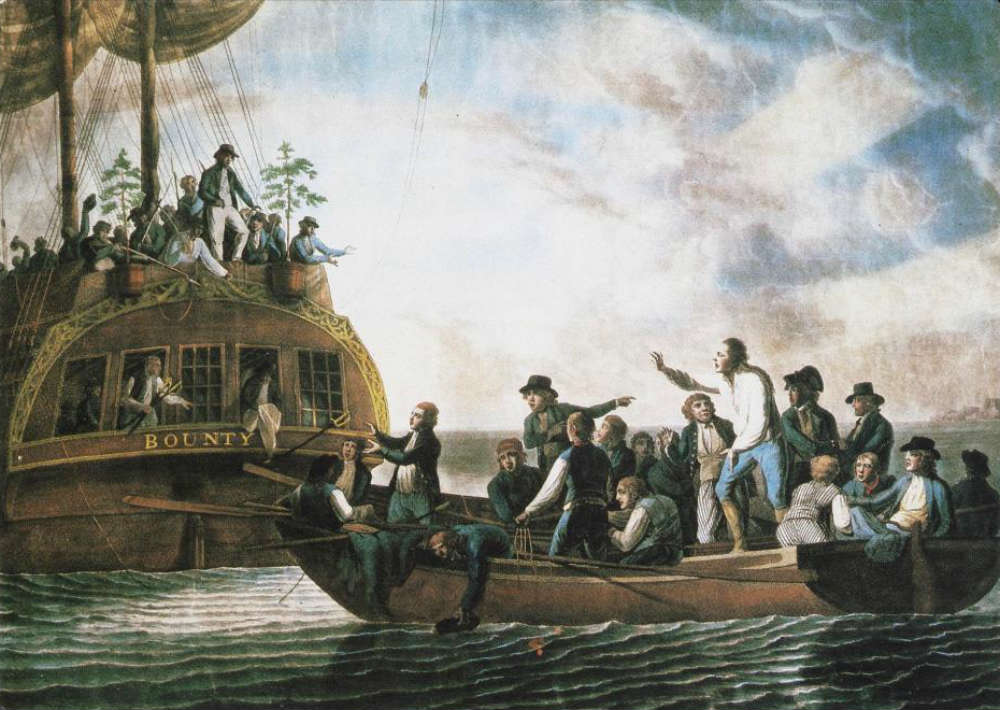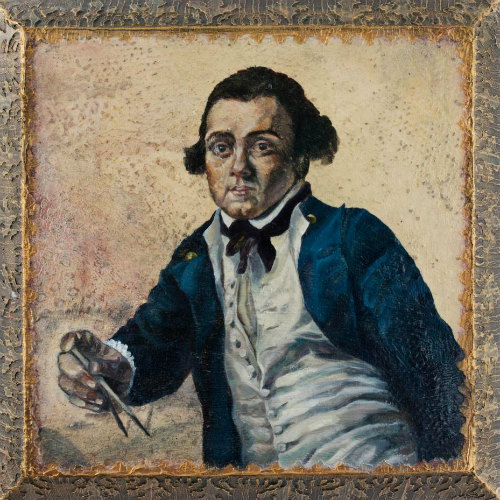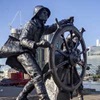
Who was Captain William Bligh? Perhaps you know him as a sailor and for the infamous mutiny on board the HMS Bounty. Or maybe you know him as the governor of New South Wales who was deposed in the only successful military coup in Australian history? Or perhaps you have never heard of William Bligh and don’t understand all the fuss? Regardless of where you stand, we have put together some key facts about this perplexing historical figure so you’re prepared for our new exhibition Bligh – Hero or Villain? launching on 26 July 2019.
Mutiny on the Bounty
Tasked with sourcing breadfruit plants from Tahiti and delivering them to the West Indies, Bligh was given command of HMS Bounty and set sail from England on 23 December 1787. With a gold medal serving as a reward, Bligh successfully collected the breadfruit trees from Tahiti and was on his merry way to the West Indies when mutiny struck. Bligh and 18 members of the crew were abandoned in a small, open boat with only five days’ worth of food and water. Bligh’s expert navigation saw the crew survive the 42-day voyage to the Dutch settlement of Coupang on the island of Timor. What was originally a story of disaster transformed into one of triumph, and even today this open-boat voyage is recognised as one of the most extraordinary feats ever achieved in sailing.

Postcard depicting a painting of the mutineers turning Lieutenant Bligh adrift from the Bounty, before 1816, ANMM Collection Gift from Rhonda Coleman, ANMS1140[037]
Governor of New South Wales (1806-1808)
Arriving in Sydney in 1806 as the fourth governor of New South Wales, William Bligh was tasked with ending the corrupt practices of the New South Wales Corps. As a stickler for following rules, Bligh seemed like the perfect person to reinstate good government, and within months made great steps to limit the Corps’ control of the colony. In his second year of governorship however, Bligh was arrested by the New South Wales Corps, and was apparently found hiding under his bed! More commonly known as the Rum Rebellion, this event was the first and only time in Australia’s history that military power had been successful in overthrowing a government.
Bad Reputation
Known for his bouts of rage, rigid attitude and tyrannical leadership style – Bligh’s reputation hasn’t gone down smoothly in the annals of history. For example, while commanding Warrior in 1804, Bligh ordered the arrest of one of his lieutenants for neglect of duty as he disagreed that an injury had made him unfit to take watch. The lieutenant was acquitted, but he later accused Bligh of having ‘grossly insulted and ill-treated him’ and behaving in an oppressive manner. In 1805 a court martial found the charges to be proved in part, and Bligh was sentenced to be reprimanded and to be ‘more correct in his language’ in the future.

Heroes of Colonial Encounters - William Bligh, © Helen S Tiernan 2017, ANMM Collection,00055148
Battle of Copenhagen
Appointed captain of the HMS Glatton, Bligh ‘fought at cables length’ from his opponents in the Battle of Copenhagen in March 1801. Under the command of celebrated naval hero Lord Nelson, British ships anchored opposite the Danish and fought close range until they surrendered or the vessel was destroyed. In his account, Bligh wrote that the battle had ended at 2.45 pm, with 17 of his men killed and 34 wounded. Despite this loss, Lord Nelson still commended Bligh for the way he conducted Glatton.
Association with Captain James Cook
At the young age of 21, William Bligh was appointed master of HMS Resolution under the command of Captain James Cook on 17 March 1776. Bligh's appointment was surprising as he was relatively inexperienced, and the master was responsible for all aspects of navigating a ship. Bligh proved himself during the voyage and constructed charts and drew plans of bays and harbours – allowing him to refine his skills in cartography and hydography.
If you’re intrigued about the man and mystery behind William Bligh, be sure to visit our upcoming exhibition Bligh – Hero or Villain? launching in July 2019. Immerse yourself in the many sides of Bligh and make your own opinion about this mystifying historical figure.
